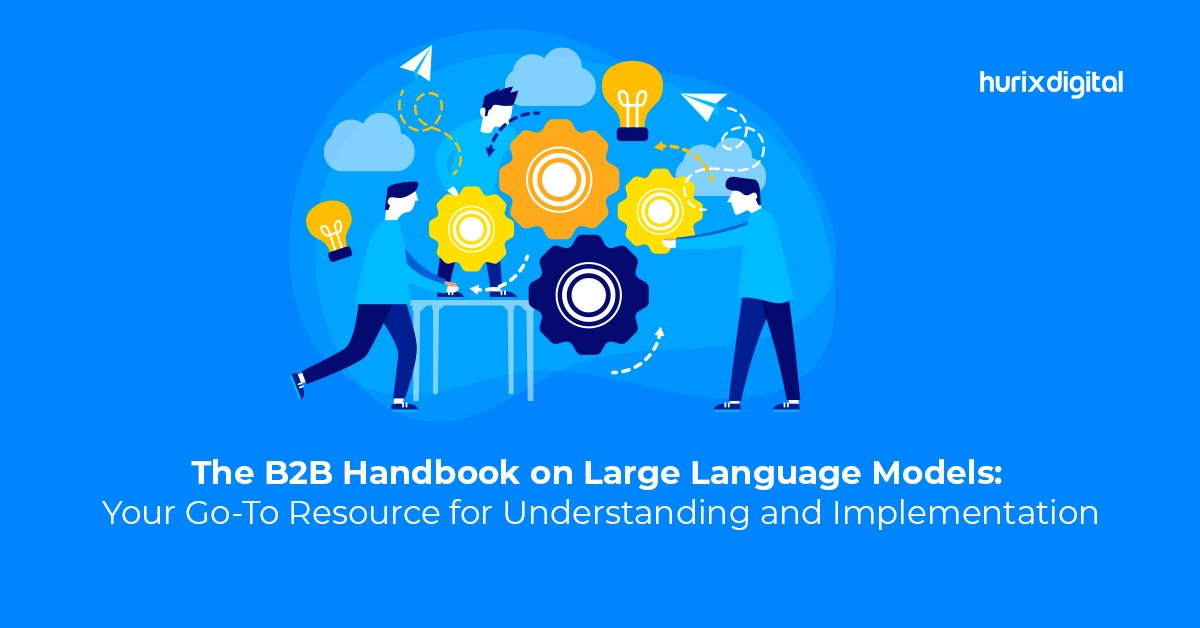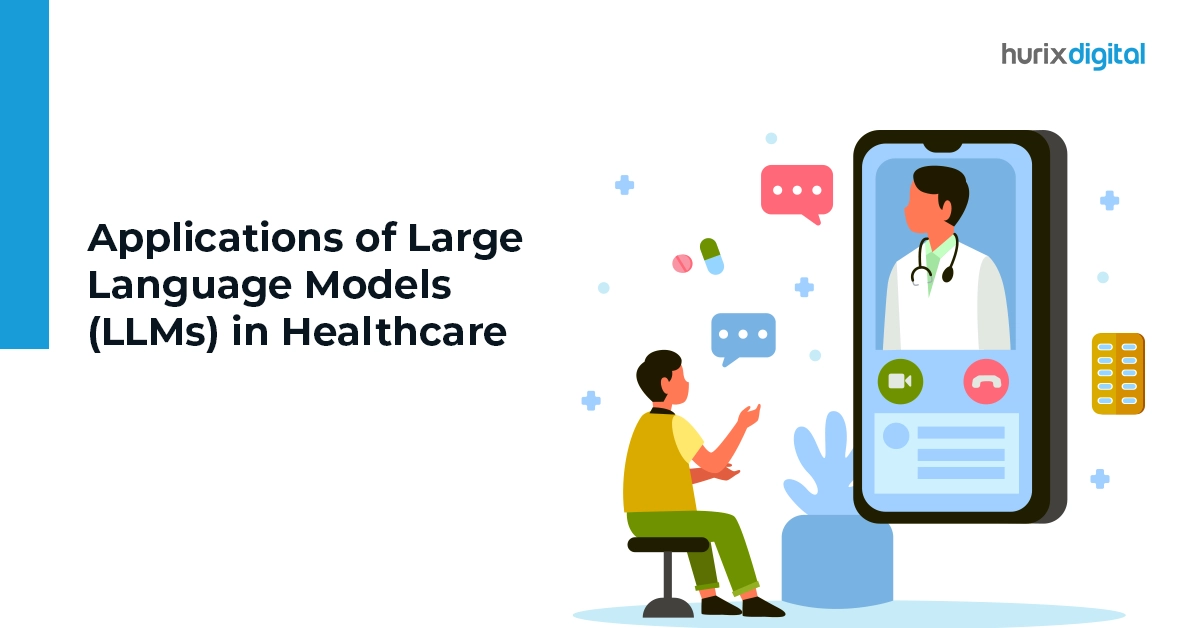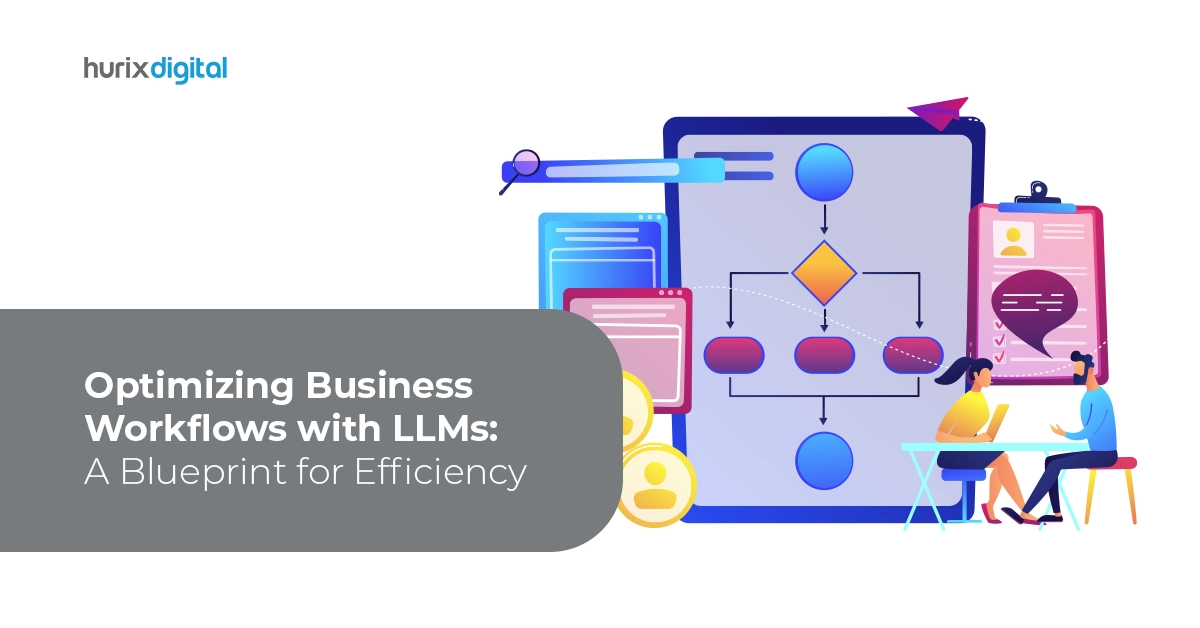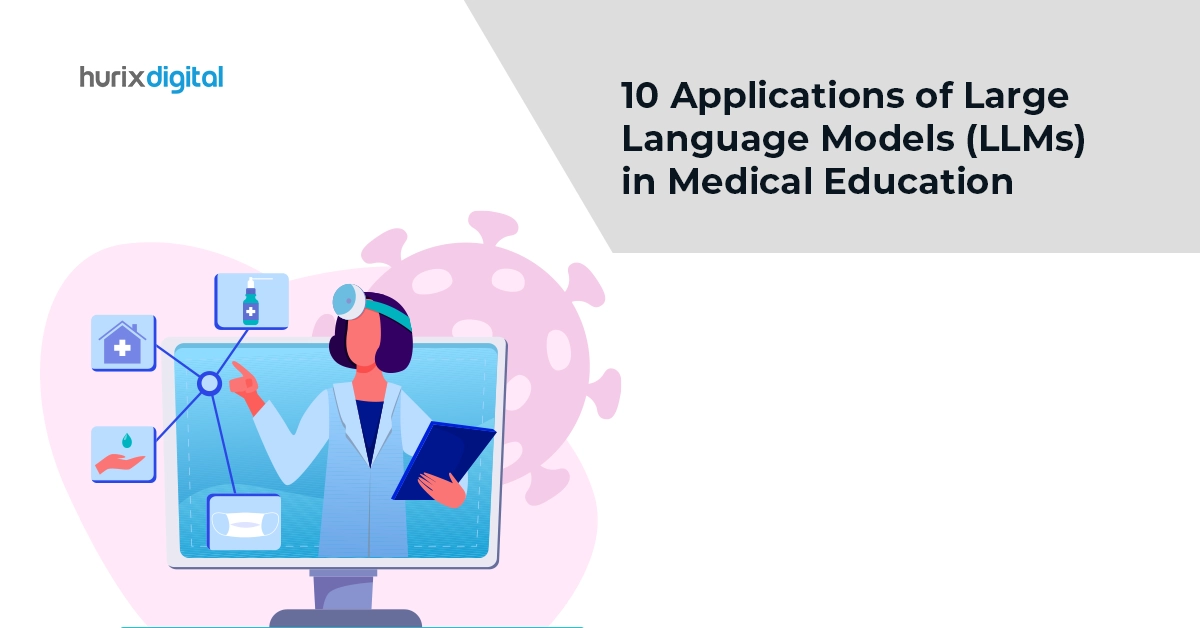
The B2B Handbook on Large Language Models: Your Go-To Resource for Understanding and Implementation
Summary
Discover the essentials of large language models for B2B applications. This handbook provides a comprehensive guide to understanding and implementing LLMs in business contexts.
Just a week after its launch in November 2022, ChatGPT had already amassed over a million followers. By January 2023, it boasted about 100 million monthly active users, making it the fastest-growing consumer application in history, outpacing the launches of other popular apps like TikTok and Instagram.
ChatGPT’s rapid rise to fame has shone a spotlight on the technology behind it: large language models (LLMs). These are AI models that can generate human-like responses to text-based prompts. LLMs are still relatively new in the field of AI, but they show immense potential in Learning & Development in both education and corporate settings.
So, let’s dive deeper into what LLMs are and how they benefit companies today.
Table of Contents:
- The Rise of LLMs
- Understanding LLMs In-Depth
- LLM Use Cases in Business
- LLM Implementation for Businesses
- What’s Next?
The Rise of LLMs
The advent of LLMs has revolutionized how businesses interact with information and users. AI and deep-learning techniques are the most common approaches for new data science applications.
LLMs, powered by advanced algorithms and vast amounts of data, are at the forefront of this revolution, offering capabilities that range from automating customer service to generating insightful reports.
As we explore artificial intelligence (AI) for business, it’s crucial to understand the significance of LLMs. These models, such as OpenAI’s GPT (Generative Pre-trained Transformer), have demonstrated proficiency in various tasks, including—but not limited to—language translation, content creation, and even coding.
The versatility of LLMs makes them invaluable assets for business automation with LLMs, enabling companies to streamline operations and enhance productivity.
Also Read: Utilizing AI to Revolutionize: How We Approach Traditional L&D Challenges?
Understanding LLMs In-Depth
Before implementing LLMs, it’s essential to grasp their underlying mechanics and capabilities. At the core, an LLM runs on an algorithm trained on vast amounts of text-based data. This training enables them to perform a wide range of NLP (Natural Language Processing) tasks with remarkable accuracy.
Moreover, an LLM can acquire new skills, such as drafting presentations or writing code, by analyzing this extensive dataset. Aside from ChatGPT, other examples of LLM-powered AI include Google’s Bard, Microsoft’s Bing, and Meta’s LLaMa.
LLMs such as GPT-3 utilize a transformer architecture, allowing them to process words about all other words in a sentence, thereby capturing the context more effectively than previous models. This architectural advancement is a critical factor in the models’ ability to understand and generate human-like text.
On the other hand, evaluating the performance of LLMs is crucial for ensuring their effectiveness in business applications. Metrics such as BLEU (Bilingual Evaluation Understudy) for translation tasks and ROUGE (Recall-Oriented Understudy for Gisting Evaluation) for summarization tasks are commonly used to assess model performance.
Additionally, real-world testing and feedback loops are essential for fine-tuning models to specific business needs.
LLM Use Cases in Business
Large Language Models (LLMs) provide a wide variety of use cases in business, leveraging their ability to understand and generate human-like text. Here are a few key applications:
- Customer Support and Service: LLMs may be used to automate responses to consumer queries, supplying immediate and personalized help. It improves consumer satisfaction and decreases the workload on human customer service reps.
- Content Generation: LLMs can assist in content creation for marketing purposes, blogs, and social media posts. They can generate relevant content based on a given subject matter or keyword, saving effort and time.
- Data Analysis and Insights: LLMs can process massive volumes of data to extract insights and trends. They can study customer feedback, reviews, and social media posts to provide insights for well-informed decision-making, highlighting the role of enterprise AI solutions in leveraging facts for strategic advantage.
- Language Translation: LLMs excel in language translation, allowing companies to interact successfully with customers across distinct languages and areas.
- Legal and Compliance: LLMs can assist legal teams in drafting contracts, studying legal documents, and ensuring compliance with guidelines. They can quickly assess files for relevant information, saving time and eliminating errors.
- Training and Education: LLMs can be utilized in training to create interactive learning materials, examine student performance, and provide customized feedback to beginners. No wonder corporations are extensively using Generative AI to train employees.
LLM Implementation for Businesses
Implementing large language models (LLMs) in businesses can revolutionize various aspects of operations, from customer service to content creation.
Here are the key steps to successfully implement LLMs in your business:
- Defining Objectives: Identifying specific goals for LLM integration, such as enhancing customer interaction, streamlining tasks, or improving data analysis, is crucial for guiding the implementation strategy.
- Assessing Data Needs: LLMs require substantial data for effective training. Evaluating existing data assets and identifying needs for additional data collection or enrichment is essential.
- Choosing the Right Model: Selecting an LLM that matches business needs and technical capabilities involves considering factors like model size, training data, and performance metrics.
- Data Preprocessing: Preparing data for LLM training involves cleaning, formatting, and balancing datasets to optimize model learning.
- Model Training: Training the chosen LLM with preprocessed data is a resource-intensive step that lays the foundation for effective model performance.
- Integration with Existing Systems: Integrate the trained LLM into your existing systems and workflows. It may involve developing APIs or connectors to facilitate communication between the LLM and other software applications.
To maximize the effectiveness of your LLM implementation, consider starting small with a pilot project or use case. This approach allows you to test the feasibility and impact of LLMs in your organization, learn from early experiences, and make informed decisions about scaling up.
Engage key stakeholders, including employees, customers, and decision-makers, in the implementation process to gather valuable insights and ensure that the LLM meets the needs of all stakeholders.
Additionally, provide comprehensive training to employees who will be working with the LLM to ensure they understand how to use it effectively. This training should cover both the technical aspects of the LLM and its practical applications in their daily tasks.
Continuously monitor the LLM’s performance using metrics such as accuracy, efficiency, and user satisfaction to evaluate its impact and make improvements as needed. Lastly, stay flexible and be prepared to adapt your implementation strategy based on feedback and changing business needs, as LLM technology is constantly evolving.
Also Read: The Future of HR: Exploring the Impact of AI Staffing Solutions on Recruitment Efficiency
What’s Next?
As the digital landscape evolves, the role of LLMs in business is poised for exponential growth. Understanding implementation strategies, embracing NLP best practices, and exploring diverse applications allows businesses to unlock new opportunities for innovation and efficiency.
However, the journey towards fully leveraging LLMs does not end with deployment. Continuous learning, evaluation, and adaptation are equally important for businesses to stay ahead in the dynamic landscape of AI.
If you want to adopt AI-driven content strategies, Hurix Digital is your go-to resource. We are an eLearning content and mobility solutions platform that streamlines the process of creating, managing, and optimizing content, helping your business remain at the forefront of digital innovation.
Connect with us to start a conversation!

A highly enthusiastic and motivated sales professional with over twenty five years of experience in solution selling of training-related applications and services. Maintains an assertive and dynamic style that generates results. Ability to establish long-term relationships with clients built on trust, quality of service and strategic vision. Specializes in financial services, higher ed, publishing and government in the areas of learning and development.








